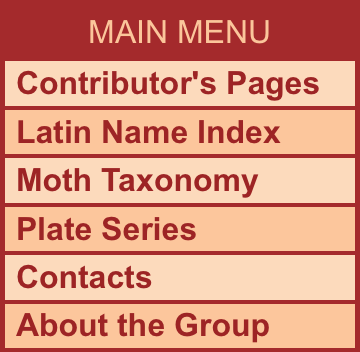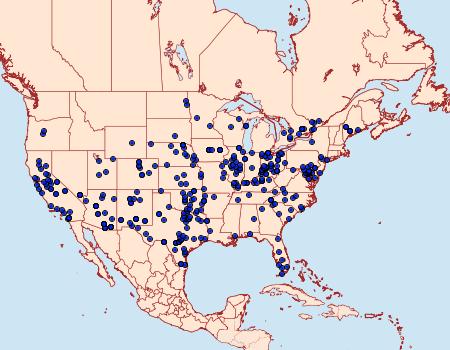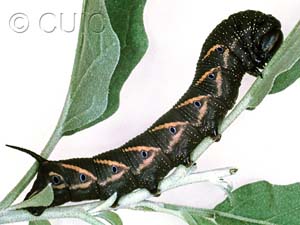Sphingidae
890091 –
7776 Manduca quinquemaculatus
(Haworth, 1803) | Five-spotted Hawk Moth, The Yellow-spotted Unicorn |
|
|
|
| Photographs are the copyrighted property of each photographer listed. Contact individual photographers for permission to use for any purpose. |
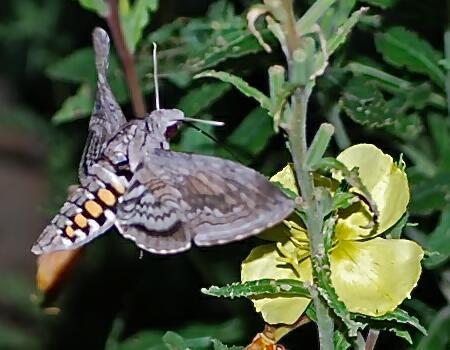
© Pete Thompson
|
| Distribution: |
Found occasionally in southern Canada from Nova Scotia to Ontario, and in Saskatchewan and British Columbia. Also throughout the United States, but uncommon in the Great Plains and the Southeast. |
Seasonality
and Size: |
One principal generation over most of the east, with mature caterpillars from July to November: Adults fly year-round in the Deep South, and from May to October to the northward. In Maryland, Glaser reports them from 30 May to 21 October. Wingspan 90 - 135 mm |
Larva and
Host Plants: |
The larvae, known as tomato hornworms, are green or brown with eight white chevrons on each side and a black "horn" at the end of the abdomen. The host plants are tomato, tobacco, potato and other members of the nightshade family. (see references) -- Host familiy: Asteraceae Solanaceae Zygophyllaceae. Host genera: Atropa Capsicum Datura Kallstroemia Lycium Nicotiana Physalis Solanum[=Lycopersicon] Taraxacum. Notes: others in Solanaceae family (Wagner 2005); leaves (Kingsley 1998). (Shropshire & Tallamy 2025 [accessed 6xii2025])
|
Description/
Field Marks: |
usually five pairs of abdominal spots. lower half of subterminal line nearly straight. forewing and hindwing fringes gray. two sharp zigzag median lines on hindwing separated by white background. |
| Similar Species: |
- 890090 Manduca sexta: may be distinguished by the following characteristics: usually six pairs of yellow spots on the abdomen; irregular wavy subterminal line on the forewing; narrow white marks on the forewing and hindwing fringes; hindwing zigzag black median lines fused together with very little white between them.
- 890097 Manduca occulta: is found in so. Arizona and rarely in So. Florida. In this moth, the light areas in the fringe of the forewing are grey rather than white and about as broad as the dark areas.
- Pinned specimens of related species. (Hint: select View by Region on the related species page.)
|
| Synonymy: |
quinquemaculatus (Haworth, 1803) (Sphinx) - MONA 1983: 7776celeus (Hübner, [1821]) (Phlegethontius)wirti (Schaus, 1927) (Protoparce) |
|
| References (Caution: DNA barcoding at BOLD provides evidence of relatedness, not proof of identification; some BOLD specimens shown may not be sequenced.) |
- Barcode of Life (BOLD) - Caution: Identifications often erroneous; DNA barcode provides evidence of relatedness, not proof of identification; many specimens not sequenced.
- Covell Field Guide p.32; Pl. 3(4, female).
- Factsheet at Florida Featured Creatures.
- Hall et al., 2021. The Moths of North Carolina - website (identification, habitats and life history)
- Haworth, A.H., 1803. Lepidoptera Britannica, 1: 59.
- Hodges, R. W., 1971. Moths of America North of Mexico, Fascicle 21:p. 31; pl. 1.6. order or free PDF
- Powell, J. A. & P. A. Opler, 2009. Moths of Western North America, Pl. 40.6m; p. 244. Book Review and ordering
- Shropshire, K.J. & D.W. Tallamy, 2025. Lepidoptera of North America, north of Mexico: an annotated list containing geographic ranges and host-plant records. ZooKeys, 1261: 101-113; Suppl. 1. (PDF or read online)
- Species Page at Bill Oehlke's moth website - Manduca quinquemaculatus
- Species Page at BugGuide.Net
- Species Page at Mass Moths
- Species Page at Pacific Northwest Moths
- Species Page at iNaturalist
- Species page at Moths of North Dakota.
- Tuttle, J. P., 2007. Hawk Moths of North America: p. 50; pl. 8.3.
- Wagner, D. L., (2005). Caterpillars of Eastern North America, p. 249.
|
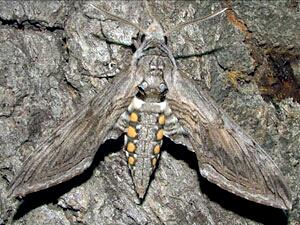
© Robert J. Nuell, Jr.
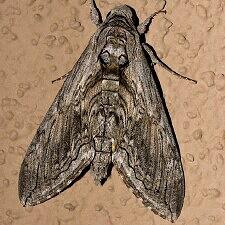
© Arlene Ripley
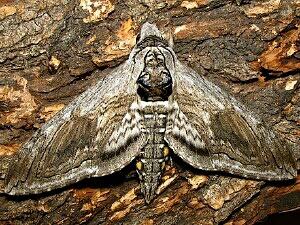
© Maury Heiman
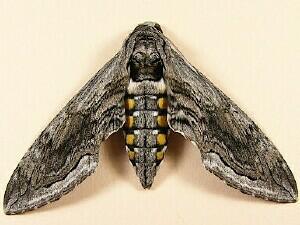
© Bob Patterson
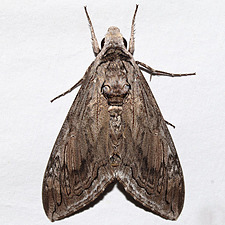
© Ken Childs
|
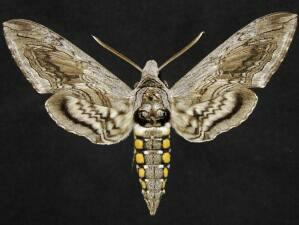
105mm – © Jim Vargo
|
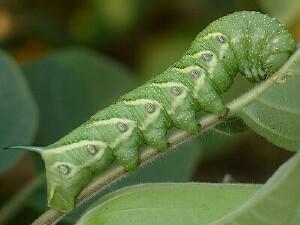
© Valerie G. Bugh
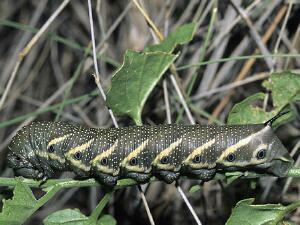
© Bryan Reynolds
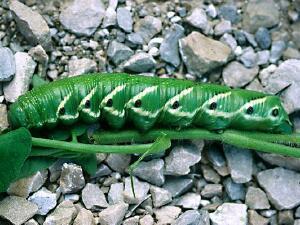
© Janice Stiefel
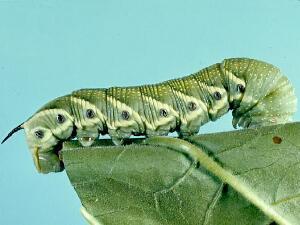
© Canadian National Collection LG
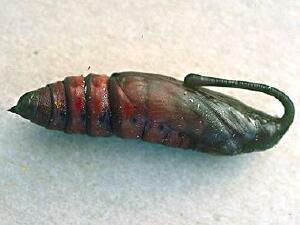
© Janice Stiefel
|
